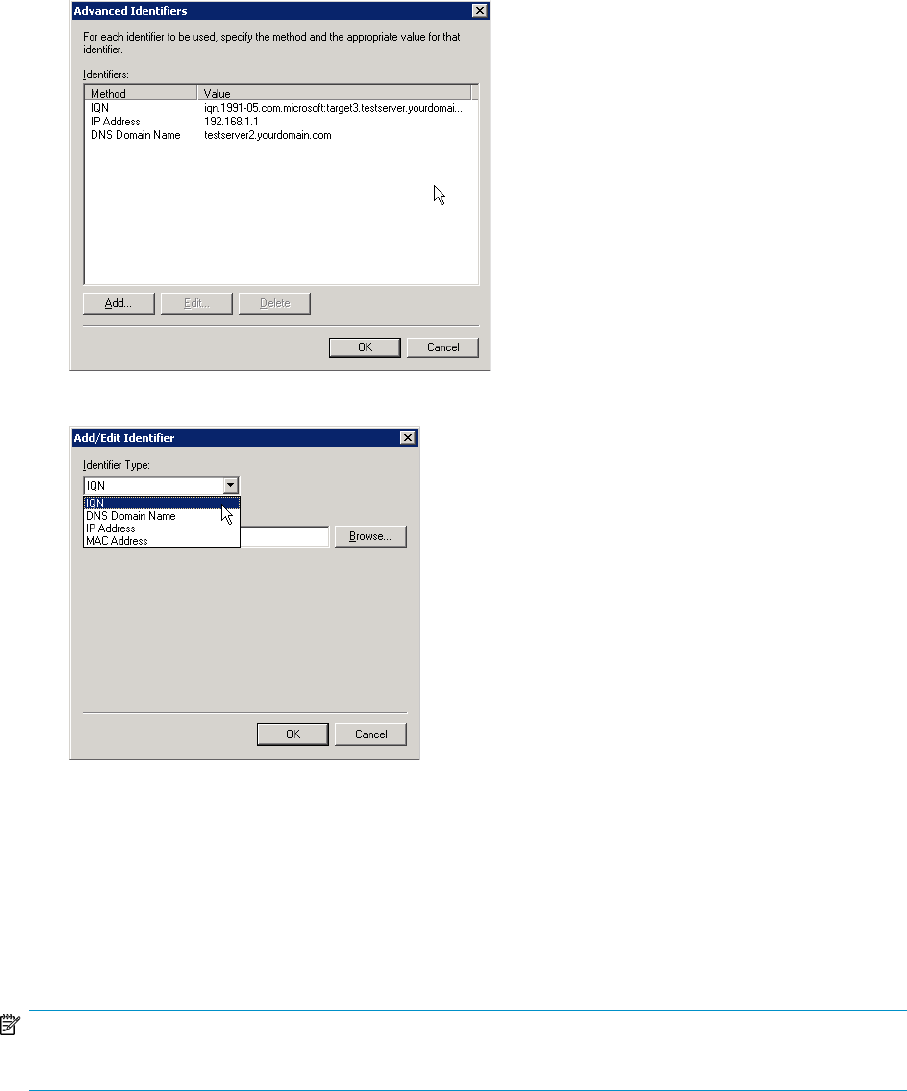Instruction Manual
Table Of Contents
- HP ProLiant SB460c SAN Gateway Storage Server
- Table of Contents
- About this guide
- 1 Storage management overview
- 2 File server management
- File services features in Windows Storage Server 2003 R2
- File services management
- Volume shadow copies
- Folder and share management
- File Server Resource Manager
- Other Windows disk and data management tools
- Additional information and references for file services
- 3 Print services
- 4 Microsoft Services for Network File System (MSNFS)
- MSNFS Features
- MSNFS use scenarios
- MSNFS components
- Administering MSNFS
- Server for NFS
- User Name Mapping
- Microsoft Services for NFS troubleshooting
- Microsoft Services for NFS command-line tools
- Optimizing Server for NFS performance
- Print services for UNIX
- MSNFS components
- 5 Other network file and print services
- 6 Enterprise storage servers
- 7 Cluster administration
- Cluster overview
- Cluster terms and components
- Cluster concepts
- Cluster planning
- Preparing for cluster installation
- Cluster installation
- Configuring cluster service software
- Cluster groups and resources, including file shares
- Print services in a cluster
- Advanced cluster administration procedures
- Additional information and references for cluster services
- 8 Troubleshooting, servicing, and maintenance
- 9 System recovery
- A Regulatory compliance and safety
- Index

Figure 23 Advanced Identifiers page
Figure 24 Add/Edit Identifier page
8. Click Next.
9. Click Finish to complete the wizard and create the iSCSI Target.
Create Virtual Disk Wizard
This section describes how to create an iSCSI Virtual Disk using the Create Virtual Disk Wizard.
NOTE:
In order to create iSCSI Virtual Disks, it is required that physical disks are formatted as NTFS.
1. In the Microsoft iSCSI Software Target MMC snap-in, click the Devices node.
2. On the details view (right pane) of the Devices node, right-click a volume and select Create Virtual
Disk.
3. Click Next on the Welcome page of the wizard.
4. On the File page, specify the full path to use as the virtual disk and click Next.
5. On the Size page, specify the size to use for the virtual disk and click Next. If the file already
exists, you cannot specify a new size.
Enterprise storage servers86










